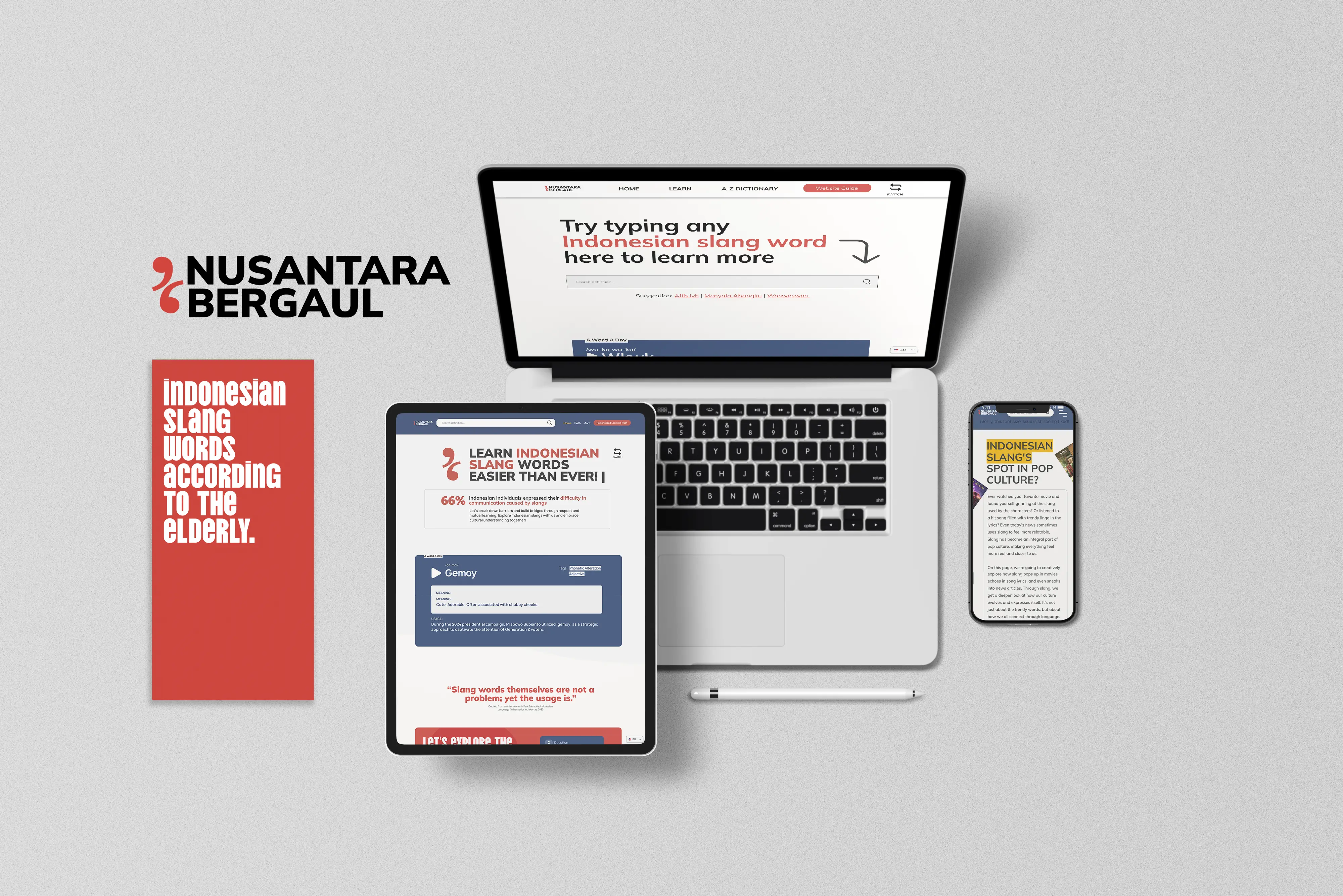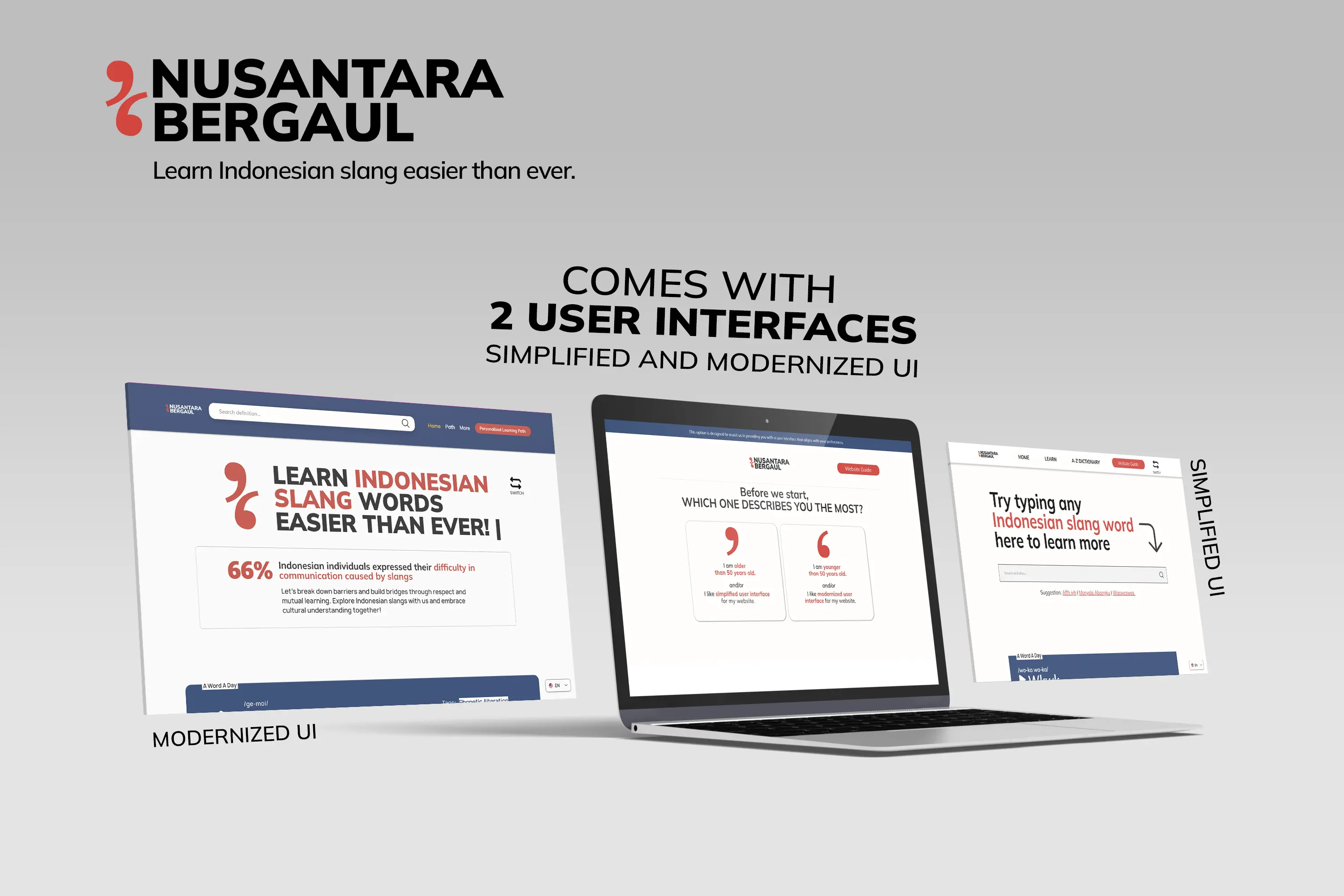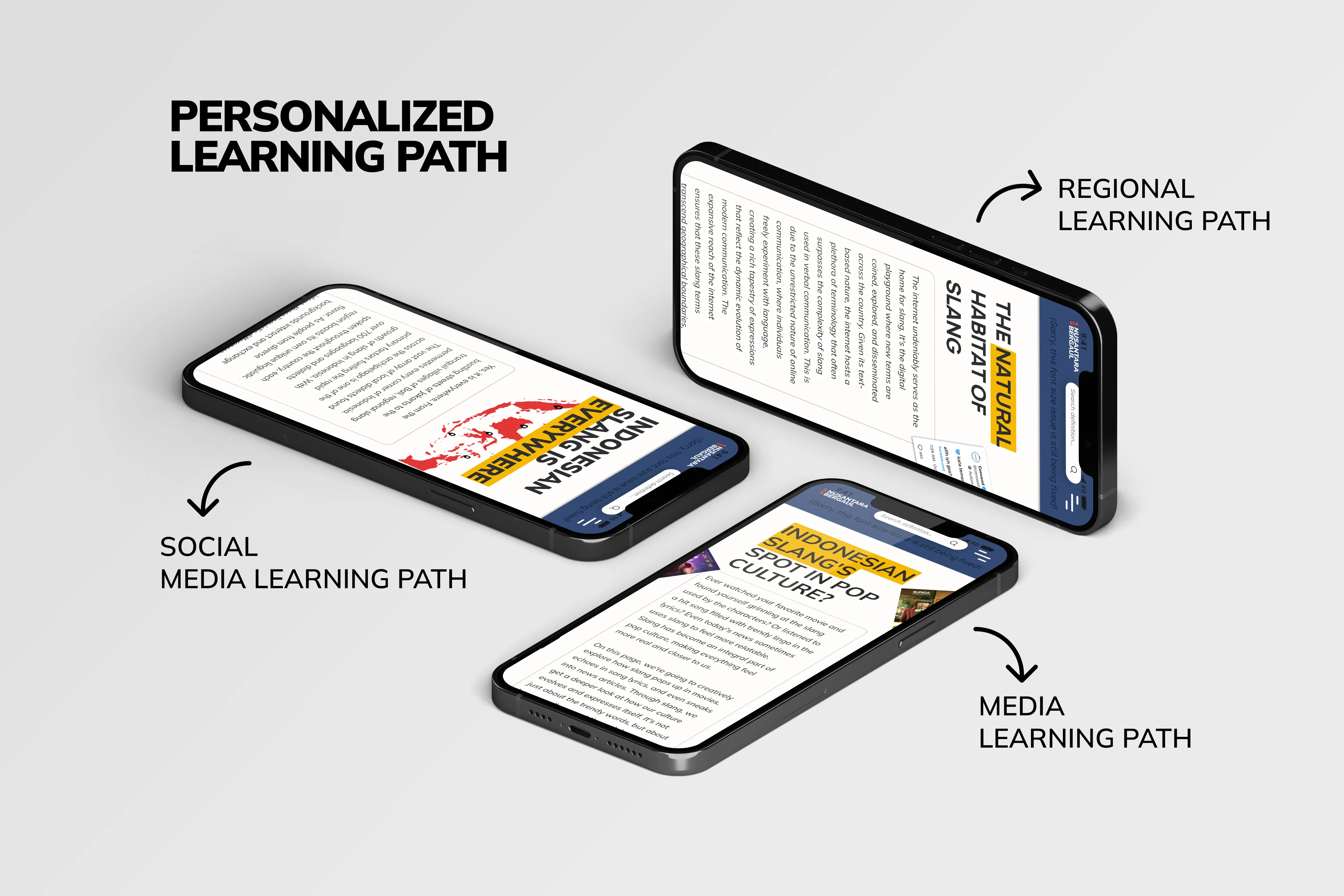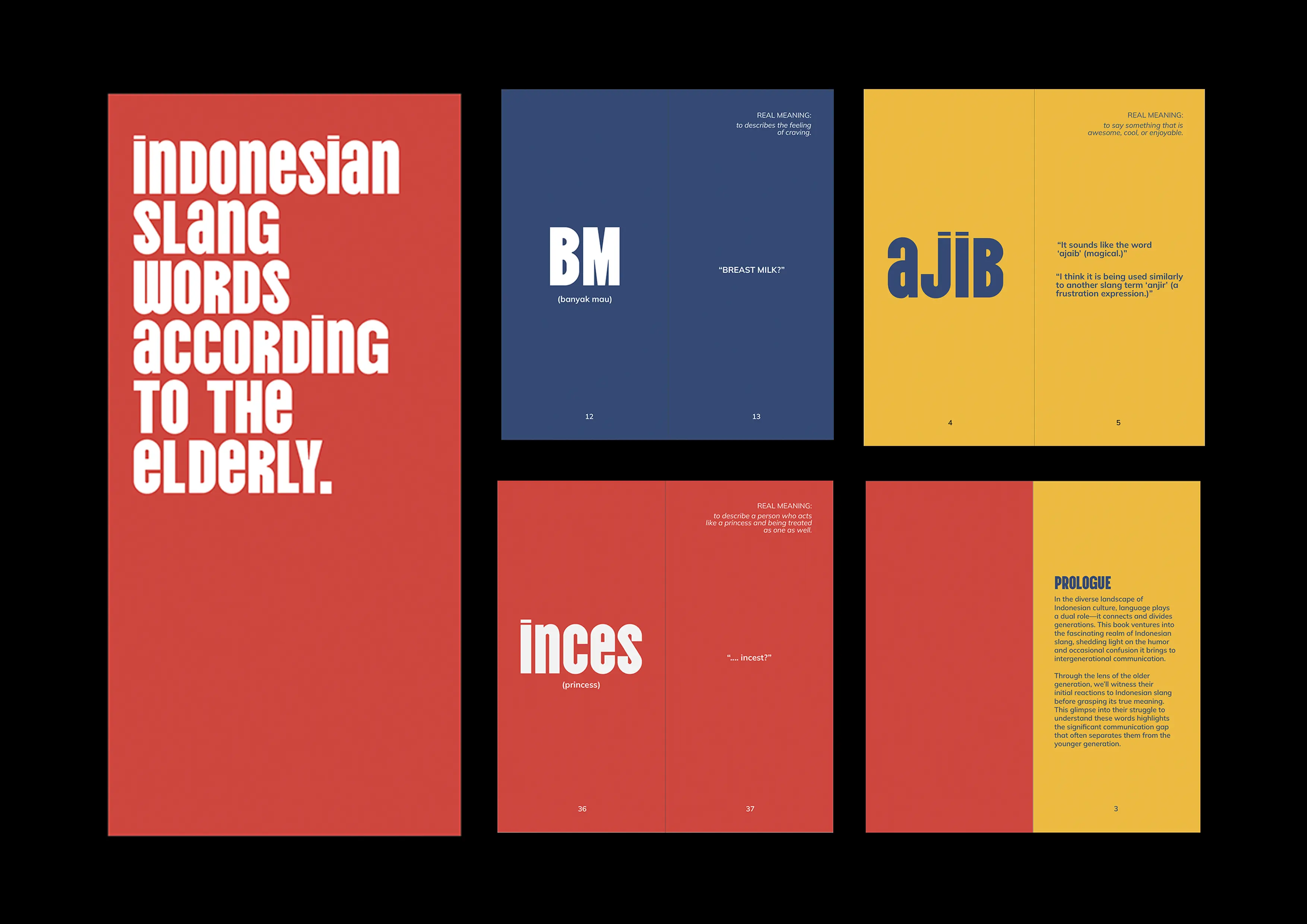Nusantara Bergaul
Wynne Liviani

Nusantara Bergaul seeks to bridge the communication gap between generations in
Indonesia caused by the dynamic nature of slang. Many
have expressed their struggle to understand one another due to such language changes. With design
thinking, Wynne’s project aims to educate both older and younger individuals on contemporary slang
and its appropriate usage. By promoting learning and dialogue, Nusantara Bergaul endeavours
to foster mutual understanding across generations, ultimately promoting harmony in communication.
Nusantara Bergaul endeavours
to foster mutual understanding across generations, ultimately promoting harmony in communication.
What insights have you gained regarding the challenges in communication between the different generations?
I interviewed a total of 9 individuals, 26 survey respondents, and also one expert who is an Indonesian language ambassador. During the interviews, the participants expressed their experience and difficulties in engaging with slang. For example, the older generation, they feel that it's hard for them to join a conversation dominated by the younger generation because they don't understand what they are talking about. And from the younger generation's side, they find it difficult to differentiate the slang words and the standard Indonesian language. Since slang is being used very commonly in conversations, they don't know the original words.
Do you have any examples?
For example, “kaypoh”. It is being used here also, right? But yeah, not many people know that it is a slang word because they don't know where the original word comes from so they use it very commonly in indonesia. It's not really a formal word. At times, because they don't know how to differentiate, they use it in formal settings and it becomes inappropriate for other people.
I also talked to the expert, and I asked her about her opinion about slang and how it affects Indonesians studying language. Is it causing problems or not? And she said that it actually has pros and cons. The pros are that it enriches the vocabulary of Indonesian language, because some words actually get added into the official Indonesian dictionary. Meanwhile, for the cons, she emphasised the issue lies in its usage, not the words themselves.
How does your project try to bridge this communication gap?
My project’s main deliverable is a website. It's called Nusantara Bergaul
. The
comprehensive website is kind of like a dictionary, dedicated to Indonesian slang. Because my target
audience is both older and younger generations, I made two user interfaces for the site. The first
one is modernised; it's for the younger generations to use. It's more interactive with animations
and more visuals. The second one is more simplified, more straightforward. And I added a website
guide for the older generations. They use the internet but sometimes it's hard for them to navigate.
The first
one is modernised; it's for the younger generations to use. It's more interactive with animations
and more visuals. The second one is more simplified, more straightforward. And I added a website
guide for the older generations. They use the internet but sometimes it's hard for them to navigate.
This website also features personalised learning paths. Because there's too many words in slang, I
just divide it into three sections for them to learn. For example, if they want to learn about
regional slang, then they go to that page. There's also a-word-a-day feature.
Because there's too many words in slang, I
just divide it into three sections for them to learn. For example, if they want to learn about
regional slang, then they go to that page. There's also a-word-a-day feature.
The second deliverable is a publication which features Indonesian slang
according to the elderly. This publication compiles initial thoughts and reactions of older
generations towards Indonesian slang. They have responses to each word without any contextual
background, so it shows how different the initial thoughts are versus the real meaning. So this
publication aims to showcase the communication gap between generations caused by slang and also to
raise awareness among younger generations about these linguistic barriers faced by the others.
This publication compiles initial thoughts and reactions of older
generations towards Indonesian slang. They have responses to each word without any contextual
background, so it shows how different the initial thoughts are versus the real meaning. So this
publication aims to showcase the communication gap between generations caused by slang and also to
raise awareness among younger generations about these linguistic barriers faced by the others.
See Food and the Migrant Diaspora, IT’S GIRL
See 寄节 (jì jié), Bearing Stories, and Seeing Glass Children